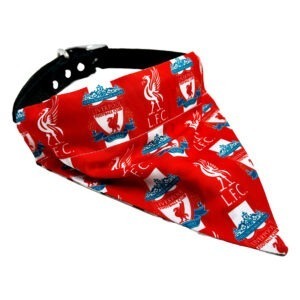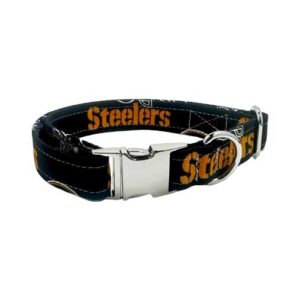Are you considering adding a furry companion to your family and torn between choosing a Newfoundland or a Saint Bernard? Both breeds are known for their gentle nature and lovable personalities, but they have distinct differences that may sway your decision. In this article, we will delve into the physical characteristics, temperament, training and behavior, living with the breed, healthcare and lifespan, cost of ownership, and real owner experiences of Newfoundland and Saint Bernard dogs. By the end, you’ll have a clearer understanding of which breed might be the perfect fit for you and your lifestyle.
Introduction
Before we dive into the details, let’s provide a brief overview of the Terre-Neuve and Saint Bernard breeds. Newfoundland dogs are renowned for their impressive size and strength. Originating from Newfoundland, Canada, they were originally bred as working dogs for fishermen. On the other hand, Saint Bernards, hailing from the Swiss Alps, were bred for rescue missions in the treacherous mountainous terrain. Both breeds have found their way into the hearts of dog lovers worldwide due to their friendly nature and loyal companionship.
Caractéristiques physiques
When it comes to physical characteristics, Newfoundland and Saint-Bernard dogs are both giants in their own right. Newfoundlands typically stand between 25 and 29 inches tall at the shoulder, while Saint Bernards are slightly taller, ranging from 26 to 30 inches. In terms of weight, Newfoundlands can weigh anywhere from 100 to 150 pounds, whereas Saint Bernards can reach a weight of 120 to 180 pounds.
Some of our latest products...
-
Bandanas pour chiens
Bandana pour chien Liverpool FC
Liste séparée par des virgules des champs méta qui ne doivent pas être copiés. USD Choix des options Ce produit a plusieurs variantes. Les options peuvent être choisies sur la page de produit -
Bandanas pour chiens
Bandana pour chien Manchester City
Liste séparée par des virgules des champs méta qui ne doivent pas être copiés. USD Choix des options Ce produit a plusieurs variantes. Les options peuvent être choisies sur la page de produit -
Bandanas pour chiens
Bandana pour chien Manchester United
Liste séparée par des virgules des champs méta qui ne doivent pas être copiés. USD Choix des options Ce produit a plusieurs variantes. Les options peuvent être choisies sur la page de produit -
Colliers pour chiens
Collier pour chien Pittsburgh Steelers
$ 20.52 USD Choix des options Ce produit a plusieurs variantes. Les options peuvent être choisies sur la page de produit
Coat type and color also differ between the two breeds. Newfoundlands boast a thick double coat that provides insulation in cold weather. Their coats come in various colors, including black, brown, and Landseer (black and white). On the other hand, Saint Bernards have a dense, water-resistant coat with shorter hair. They are predominantly known for their classic combination of white with patches of red or brindle.
Tempérament
Both Newfoundland and Saint Bernard dogs are renowned for their gentle and kind-hearted temperaments, making them excellent family pets. They are known for being patient, affectionate, and highly sociable. However, it’s essential to consider their interactions with children and other pets when choosing the right breed for your family.
Newfoundlands are famously good-natured with children and tend to be protective of their family members. They are known for their patience and tolerance, making them an ideal choice for families with young children. Similarly, Saint Bernards have a reputation for being gentle giants and are generally very tolerant and patient with children. However, due to their large size, close supervision is necessary to prevent accidental knocks or falls.
Regarding other pets, both breeds can get along well with proper socialization and training. Newfoundlands are generally friendly with other animals, while Saint Bernards can be more reserved and cautious around unfamiliar dogs. Early socialization and positive experiences are key to ensuring harmonious relationships with other pets in the household.
Formation et comportement
When it comes to training, both Newfoundland and Saint Bernard dogs are intelligent and eager to please their owners. However, their training needs may vary, and understanding their behavior is crucial for effective training sessions.
Newfoundlands are known for their calm and docile demeanor, which can make training a relatively smooth process. They respond well to positive reinforcement techniques and require consistent, patient, and gentle guidance. It’s important to note that Newfoundland puppies can be quite boisterous, so early socialization and obedience training are crucial to ensure they grow into well-mannered adults.
Saint Bernards, while equally intelligent, may exhibit a stubborn streak at times. They respond best to positive reinforcement and rewards-based training methods. Early socialization is essential to prevent any potential behavioral issues stemming from their protective instincts.
Both breeds may experience common behavior problems such as excessive barking, separation anxiety, and drooling. Proper training, exercise, mental stimulation, and consistent rules and boundaries can help address and mitigate these issues effectively.
Living with the Breed
Living with Newfoundland and Saint Bernard dogs requires an understanding of their specific needs and lifestyle requirements. Let’s explore their day-to-day life, exercise needs, and adaptability to different environments.
Newfoundlands thrive in a loving and nurturing environment, enjoying close interaction with their families. They are generally indoor dogs and prefer to be in the presence of their loved ones. However, their large size means they need ample space to move around comfortably. Daily exercise in the form of walks, swimming, or play sessions is essential to keep them physically and mentally stimulated.
Similarly, Saint Bernards are known for their love of human company and are happiest when they are a part of their family’s activities. They are adaptable to both indoor and outdoor living but require regular exercise and mental stimulation to prevent boredom and destructive behavior. Daily walks and playtime are essential to keep them content and healthy.
It’s worth noting that both breeds have a propensity for drooling, especially after drinking water or eating. Regular grooming, including wiping their mouths, can help manage this issue and keep your living spaces clean.
Healthcare and Lifespan
Proper healthcare and understanding the potential health issues of Newfoundland and Saint Bernard dogs are vital for their overall well-being. Let’s take a closer look at the common health concerns and how to care for these breeds as they age.
Newfoundlands are prone to certain health conditions, including hip and elbow dysplasia, heart diseases, and certain types of cancer. Regular veterinary check-ups, a balanced diet, exercise, and maintaining a healthy weight are essential for their long-term health. Additionally, as with any large breed, Newfoundlands may be more susceptible to bloat or gastric torsion, a potentially life-threatening condition. Feeding them smaller meals throughout the day and avoiding exercise immediately after meals can help reduce the risk.
Saint Bernards also have their share of health issues, including hip dysplasia, heart problems, and eye conditions. Regular vet visits, a nutritious diet, and moderate exercise are important for their well-being. As with Newfoundlands, Saint Bernards are prone to bloat, so preventive measures should be taken.
With proper care and attention to their specific needs, Newfoundlands can have an average lifespan of 8 to 10 years, while Saint Bernards typically live between 8 and 10 years.
Coût de propriété
Owning a dog comes with certain financial responsibilities. Let’s examine the cost of owning a Newfoundland or a Saint Bernard, including expenses related to food, grooming, healthcare, and insurance.
The cost of food will depend on the size and dietary requirements of your dog. As large breeds, both Newfoundlands and Saint Bernards will require a significant amount of food. High-quality dog food formulated for large breeds is recommended to meet their nutritional needs. The average monthly cost for dog food can range between $50 and $100.
Grooming needs for Newfoundlands and Saint Bernards are relatively high due to their thick coats. Regular brushing is necessary to prevent matting and keep their coats healthy and clean. Occasional professional grooming sessions may be required, especially during shedding seasons. The average monthly cost for grooming can range between $50 and $100.
Healthcare expenses should also be considered. Regular vaccinations, routine check-ups, flea and tick prevention, and potential medical treatments should be factored into your budget. Additionally, pet insurance can help alleviate unexpected veterinary costs. The cost of insurance can vary depending on the coverage and the age and health of your dog.
Real Owner Experiences
To gain a deeper understanding of life with Newfoundland and Saint Bernard dogs, let’s hear some first-hand accounts from owners who have shared their lives with these remarkable breeds:
- “Having a Newfoundland in our family has been a truly rewarding experience. Their gentle nature and love for children make them the perfect companion for our young kids. Our Newfoundland, Bella, brings so much joy and happiness to our home.”
- “Our Saint Bernard, Max, is a true gentle giant. Despite his imposing size, he is incredibly patient and tolerant with everyone he meets. He’s become a beloved member of our family and has enriched our lives in countless ways.”
Conclusion
Choosing between a Newfoundland and a Saint Bernard ultimately depends on your lifestyle, preferences, and ability to meet the specific needs of each breed. Both breeds offer unwavering loyalty, gentle temperaments, and a deep love for their families. Consider their physical characteristics, temperament, training requirements, healthcare needs, and the costs associated with owning these breeds. By carefully evaluating these factors, you’ll be better equipped to make an informed decision that will result in a fulfilling and lifelong bond with your canine companion.
FAQ
Are Newfoundlands and Saint Bernards good with children?
Both Newfoundlands and Saint Bernards are known for their gentle and patient nature, making them excellent companions for children. However, close supervision is necessary due to their large size to prevent accidental knocks or falls.
Do Newfoundlands and Saint Bernards get along with other pets?
With proper socialization and training, both breeds can coexist harmoniously with other pets in the household. Newfoundlands are generally friendly with other animals, while Saint Bernards may be more reserved and cautious around unfamiliar dogs.
What are the exercise needs of Newfoundlands and Saint Bernards?
Newfoundlands and Saint Bernards require regular exercise to keep them physically and mentally stimulated. Daily walks, play sessions, and activities such as swimming are beneficial for their overall well-being.
Do Newfoundlands and Saint Bernards have any specific health concerns?
Newfoundlands are prone to hip and elbow dysplasia, heart diseases, and certain types of cancer. Saint Bernards may experience hip dysplasia, heart problems, and eye conditions. Regular veterinary check-ups and a healthy lifestyle can help mitigate these health issues.
How much does it cost to own a Newfoundland or a Saint Bernard?
The cost of owning a Newfoundland or a Saint Bernard includes expenses such as food, grooming, healthcare, and insurance. On average, monthly costs can range between $100 and $200, depending on the size, specific needs, and geographical location.





